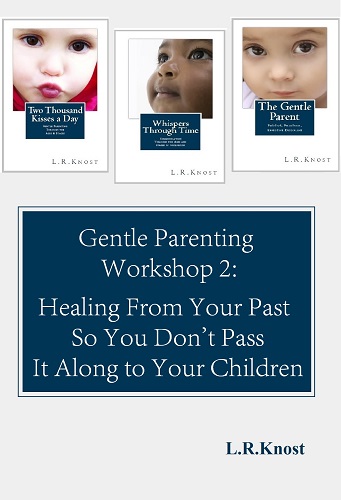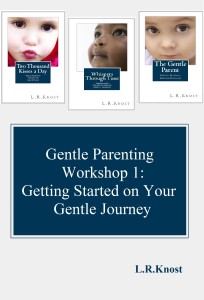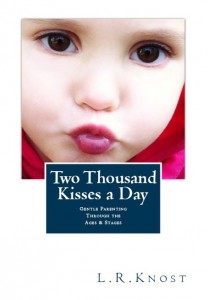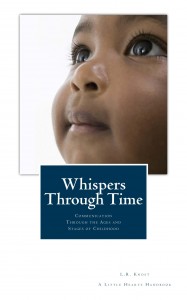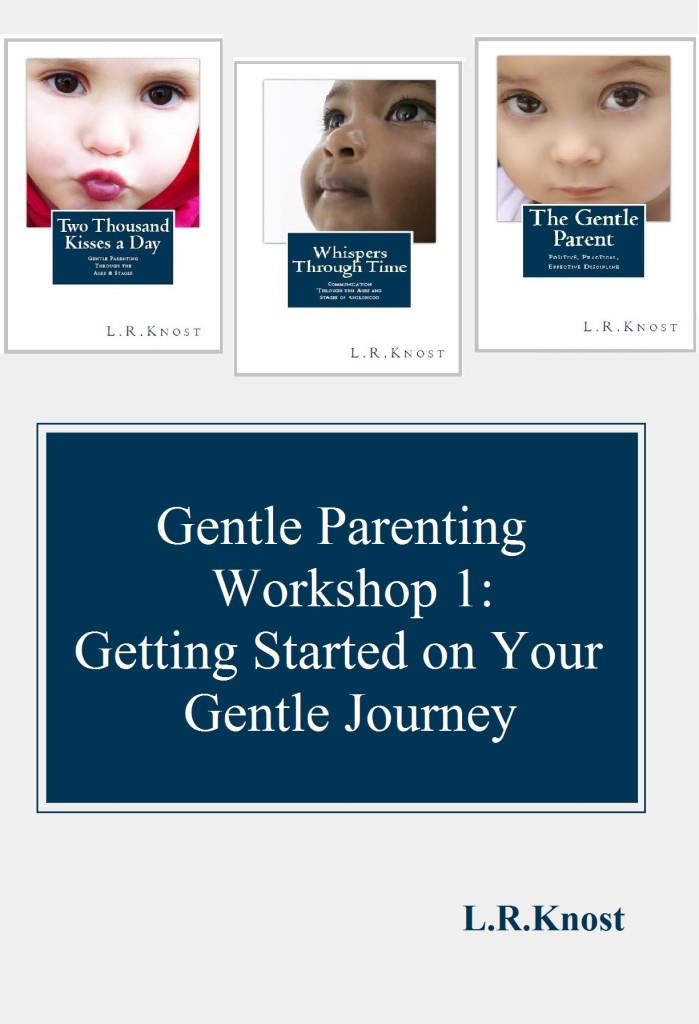‘Encouraging Safe Negative Emotional Expression (i.e. Stopping the Peeing, Spitting & Kicking)’ by Guggie Daly – Friends of L.R.Knost Rock the Guest Posts while She Battles Cancer
 A common stage that can start around age 2 but typically peaks by age 4 is the passive aggressive communication of negative feelings. This stage occurs on its own as a normal milestone because the child needs to develop verbal skills and emotional intelligence. But, for some children, the stage can be especially difficult due to various factors.
A common stage that can start around age 2 but typically peaks by age 4 is the passive aggressive communication of negative feelings. This stage occurs on its own as a normal milestone because the child needs to develop verbal skills and emotional intelligence. But, for some children, the stage can be especially difficult due to various factors.
First, if the child has been emotionally invalidated frequently by other caregivers or cherished peers, this behavior might become a way to passively share emotions or cry out for help, or even attempt to take back some semblance of control. Watch out for common invalidating comments. Take steps to remind the adult that your child is learning and respect is required. Briefly but firmly reassure the child when invalidation occurs. Some examples of emotional invalidation:
Oh, you’re ok! Stop crying about it.
Hey! There’s no reason to be angry about that, quit it.
Oh, you’re being a scaredy cat. That’s not scary at all.
Why are you crying over such a silly thing? Don’t be a baby.
I don’t care if that makes you angry. That doesn’t matter.
I can’t stand when you cry like that. Knock it off already.
Your brother isn’t scared of the dark. Why don’t you be like him?
Besides directly hurting the child, invalidating situations deprive the child of an opportunity to practice emotional processing and emotional regulation. It’s a loss of skill development. Try whenever possible to defend your child from invalidation.
Second, if the child is experiencing any language difficulties or delays, or other circumstances and conditions that interfere with easy verbal communication such as hearing difficulties, autism, hyperactivity, etc, then this stage can persist because it is simply easier to communicate physically. Or it might be impossible from the child’s perspective to communicate in ways society deems appropriate. In these cases, removing the obstacle when possible and working on coping skills can help create a bridge from the physical outbursts to safer expression.
When your child only expresses negative emotions in your presence
Many parents report that their children do not act out at school, daycare, the other parent’s home, in front of peers, etc. But, seemingly the moment they get home, suddenly the children are throwing things, screaming, spitting, wetting their pants…why the sudden change?
If your child only expresses negative emotions in your presence, or in specific areas such as only at home, this is a sign that she feels safest with you. It’s not a bad sign. It doesn’t mean she’s taking advantage of you or that you’re too soft on her. On the contrary, it means she has big emotions boiling up inside her and she only trusts you to see them.
Think about it. If you’re really stressed out about something you feel is perhaps slightly embarrassing (read: invalidating or shamed by others) you probably keep it hidden. You don’t cry your eyes out at work. You don’t curse and go on about someone who hurt you at the playground. You wait until you’re home and with a safe person to finally let go of your feelings. Children do this, too. And if your child is doing this frequently, it could be a sign that he feels shamed, judged, or invalidated. Remember this when you are facing frustrating behavior, so that you can respond in a way that builds the trust while developing the communication skills.
When your child begins to use emotional outbursts to exert control
Children who feel stifled emotionally can feel powerless. This can cause intense feelings of resentment and anxiety. The child is stuck experiencing what feels like a very large crisis, but the adults around him ignore it or punish him if he lets them know about it. He’s new to the world and has very few skills for handling it, so he’s lost in himself and lost to others.
As he begins to act out, he comes to find that certain ways of expressing his emotion not only feel good, letting off steam and relieving that anxiety inside him, but might also cause a reaction in others. If it feels good and gets him what he wants, it must be a good idea to keep using it!
Suddenly, you have a child who spits on you when she’s angry or pees her pants when she’s rejected. Who throws toys at children at the park when she feels left out or pretends to choke on food she doesn’t like.
Emotions don’t just melt away. They will find their way out, and in children who haven’t developed healthy emotional skills, they will come out in ways we dislike. Ways that might hurt others or cause negative reactions. Ways that tempt us to rain down punishment and consequences.
If your child is falling back on crude emotional expression to get your attention, it’s a sign that she needs your help, not punishment at this time. No, I’m not saying to condone the behavior or to go all wishy-washy. I’m warning against hyper focusing on the negative behavior to the point that skill-building is squeezed out. Even if the child is punished enough to be convinced to stop the emotional outburst, she still needs to learn healthy ways to process and express her emotions. The need is still there. Start processing with her.
Great. So how is this done?
Let’s use a real life example of a 3 year old who is fully potty trained and does not wet her pants at preschool or with her father. But, she frequently wets her pants when with her mother. Not only does this warn us that she feels safe in her mother’s presence and that she has some big emotions building up inside her, but the child has also begun to use the emotional outbursts to cause reactions in others.
For example, when the mother walked away from the 3 year old to care for the baby, the 3 year old wet her pants.
At this point, a lot of different approaches could be taken ranging from shaming and punishment to completely ignoring it and remaining emotionless while cleaning up the mess. These are merely superficial responses, however, and do nothing to encourage her to develop emotional skills.
Let’s say the mother has just come back from caring for the baby and the 3 year old is sitting on the floor with wet pants and with an angry and slightly rejected expression on her face. What does the mom do for her?
She gets down on one knee, moving close to her, making eye contact and making physical contact such as by touching her arm gently. While keeping physical and eye contact, she begins assessing the situation.
Hey. I see that you peed in your pants. You must be feeling pretty embarrassed right now. Can you use your words to tell me why you peed your pants? Pause for response. You were feeling angry because I left you to help the baby, huh. It made your heart hurt? Pause for response.
You know, it’s okay to feel angry. That’s a strong feeling, but it doesn’t make you a bad person. Everyone feels angry sometimes. When I feel angry, it makes my stomach squeeze. What does it feel like for you? Pause for response.
Next time when you feel angry, I want you to use your words to tell me. Say, “I’m angry!” Let’s try it right now. Ready? Tell me! Pause for response. Remember, instead of peeing your pants, it’s okay to tell me that you’re angry. I’ll always listen to you.
And if you begin to recognize individual triggers, briefly remind her before they happen:
I’m going to focus on caring for your sister right now. Remember, if you feel alone, come grab my hand and tell me instead of peeing your pants.
I’m going to leave the room to make dinner. If you feel scared inside, come and get me, ok? Remember to keep your pants dry.
Tonight, we’re going to be very busy with the baby at the park. If you start to feel angry, be sure to tell me with your big girl words! I will listen.
Remember to keep it as simple or long as needed, pausing when needed and following cues to go where the conversation leads you. As children begin to realize how much connection they can make with words, lots of thoughts might tumble out in little situations like this. Try to listen intently and to provide a safe place for those emotions to come out.
Guggie Daly, taking a break from her studies in neuroscience to care for her four young children, hopes to share relevant, up to date information with other parents so that they can take advantage of foresight and not live with hindsight. You can find more information on her blog at Guggie Daly: Empowering Information and on Facebook at The Guggie Daily.
Related posts:
 Award-winnning author, L.R.Knost, is the founder and director of the children's rights advocacy and family consulting group, Little Hearts/Gentle Parenting Resources, and Editor-in-Chief of Holistic Parenting Magazine. Books by L.R.Knost include Whispers Through Time: Communication Through the Ages and Stages of Childhood ; Two Thousand Kisses a Day: Gentle Parenting Through the Ages and Stages ; The Gentle Parent: Positive, Practical, Effective Discipline ; and Jesus, the Gentle Parent: Gentle Christian Parenting the first four books in the Little Hearts Handbook gentle parenting series, and children’s picture books Petey’s Listening Ears and the soon-to-be-released Grumpykins series.
Award-winnning author, L.R.Knost, is the founder and director of the children's rights advocacy and family consulting group, Little Hearts/Gentle Parenting Resources, and Editor-in-Chief of Holistic Parenting Magazine. Books by L.R.Knost include Whispers Through Time: Communication Through the Ages and Stages of Childhood ; Two Thousand Kisses a Day: Gentle Parenting Through the Ages and Stages ; The Gentle Parent: Positive, Practical, Effective Discipline ; and Jesus, the Gentle Parent: Gentle Christian Parenting the first four books in the Little Hearts Handbook gentle parenting series, and children’s picture books Petey’s Listening Ears and the soon-to-be-released Grumpykins series.
Did Jesus have a Temper Tantrum?
[Excerpt reprinted from Jesus, the Gentle Parent: Gentle Christian Parenting by L.R.Knost. Two Thousand Kisses a Day: Gentle Parenting Through the Ages and Stages; Whispers Through Time: Communication Through the Ages and Stages of Childhood; and The Gentle Parent: Positive, Practical, Effective Discipline by L.R.Knost also available on Amazon and through other major retailers.]
~~~~~~~~~~~~~~~~~~~~~
 “Jesus entered the temple courts and drove out all who were buying and selling there. He overturned the tables of the money changers and the benches of those selling doves. “It is written,” he said to them, “‘My house will be called a house of prayer but you are making it a den of robbers.’”
“Jesus entered the temple courts and drove out all who were buying and selling there. He overturned the tables of the money changers and the benches of those selling doves. “It is written,” he said to them, “‘My house will be called a house of prayer but you are making it a den of robbers.’”
Matthew 21:12-13
Temper tantrum: (n.) a loss of mental balance or composure, esp. an outburst of anger or irritation
It may seem a bit disrespectful to label Jesus’ takedown in the temple courtyard as a temper tantrum, but according to the dictionary definition of a tantrum, that would be an accurate designation. He acted out his overwhelming emotions by flipping over tables and throwing chairs and chasing people away in a God-sized, epic tantrum that must have shocked the religious to their core and rocked the pharisaical back on their heels.
So what’s the deal? Are temper tantrums signs of a child’s sinful, selfish nature, as the child-training set are so quick to accuse, or are they normal expressions of overwhelming emotions? Let’s see what the child-trainers have to say:
“A temper tantrum is an absolute rejection of parental authority. Parents should isolate the child (with a promise of consequences), then follow through with chastisement [spanking] after the child settles down.” (Gary Ezzo, Growing Kid’s God’s Way)
“…tantrums are a form of challenging behavior that can be eliminated by one or more appropriate spankings.(p. 108)” (Dr. James Dobson, The New Dare to Discipline)
“A seven-month-old boy had, upon failing to get his way, stiffened, clenched his fists, bared his toothless gums and called down damnation on the whole place. At a time like that, the angry expression on a baby’s face can resemble that of one instigating a riot. The young mother, wanting to do the right thing, stood there in helpless consternation, apologetically shrugged her shoulders and said, “What can I do?” My incredulous nine-year-old whipped back, “Switch him.” The mother responded, “I can’t, he’s too little.” With the wisdom of a veteran who had been on the little end of the switch, my daughter answered, “If he is old enough to pitch a fit, he is old enough to be spanked.(p. 79)” (Michael Pearl, To Train Up a Child)
“If your child is still angry, it’s time for another round. ‘Daddy has spanked you, but you are not sweet enough yet. We are going to have to go back upstairs for another spanking.’”(Tedd Tripp, Shepherding a Child’s Heart)
So, what do you think, parents? Is acting out of overwhelming emotions a sin that must be punished as the child-trainers claim or is it normal human behavior? Is there even such a thing as normal human behavior, or is human behavior itself sinful by its very nature? Is having overwhelming emotions, in and of itself, a sin?
Sin, Biblically speaking, is acting outside of God’s nature. Since Jesus is God in the flesh, he was clearly acting within God’s nature at all times, even though he was also fully human. So, Jesus’ actions and his human behaviors, his normal human behaviors, all fell within the boundaries of God’s nature and therefore were and are not sinful.
Let’s go back to Jesus and breakdown the takedown in the temple. He was angry. He toppled tables. He threw things. He chased people away. But Jesus was and is sinless, so clearly being angry, being overwhelmed by big emotions, and acting on those emotions are not sins, in and of themselves.
When does acting on emotions become sinful, then? The answer lies in Ephesians 4:26-27, “In your anger do not sin: Do not let the sun go down while you are still angry, and do not give the devil a foothold.” Note that it doesn’t say, “Getting angry is a sin.”
Emotions can lead to sin when they remain unsettled, are left to burrow deeply into our hearts and take root, and when we subsequently respond with spite, bitterness, vengeance, or rage.
As parents, then, how can we help our children when they are overwhelmed by their emotions, when they tantrum and cry and act out their big feelings? Does it make sense to expect them to cope with their big emotions alone or to suppress their emotions so they remain unsettled?
Of course not. Our children need us to parent them, not punish them.
“God is our refuge and strength, an ever-present help in times of trouble.”
(Psalm 46:1b)
Just as God is “our refuge and strength” and “an ever-present help” that is what we need to be for our children, to reflect the heart of our Father to our own little ones. We can help them to process their emotions. We can work with them to resolve their problems. And we can equip them with the life skills they’ll need to handle their emotions on their own when they grow into adulthood.
As you read on, remind yourself that having emotions is not a sin and needing help processing those emotions is a normal part of childhood:
When a little person feels frustrated, overwhelmed, or just plain old out-of-sorts (read: tantrum time!), it’s tempting for parents to focus on correction rather than connection. But when children are intensely stressed, the prefrontal cortex of the brain, which in early childhood is an underdeveloped, mushy grey sponge waiting to be formed, is flooded with cortisol, the ‘stress hormone.’ The result is what is known as the fight-freeze-or-flight syndrome in which higher brain functions (learning, reason, self-control) are markedly hampered and lower brain functions (instinct, physical reactions) take over. This is an in-built survival mechanism that gradually comes under conscious control through years of growth in a safe and supportive environment. Interestingly, it is theorized that this underdeveloped ‘sponginess’ is why small children are able to learn new languages more quickly than older children and adults. They are, in a very literal way, absorbing information raw, unhampered by the processing and reason of a more mature brain.
Expecting young children to have the maturity and self-control to overcome this God-given survival instinct is unrealistic. Threatening, punishing, or even reasoning with them while their higher brain functions are suppressed is futile and actually just adds more stress to the situation (more stress = fuel on the tantrum-fire!).
What they really need is help…
- First, help coping with their big emotions
- Then, help reconnecting with their source of safety and security (you!)
- And last, help processing the problem that sent them into a maelstrom of emotion in the first place.
Punishing them, yelling at them, sending them to their room, or putting them in time-out disconnects them even further from their source of security and not only delays a resolution of the issue, but misses an opportunity to equip them with the tools they need to handle future problems.
This is where the Three C’s of gentle discipline come into play:
Connection:
- Remaining present and supportive until they are able to calm down enough to accept your help
- Drawing them close when they’re ready (time-in)
Communication:
- Validating their emotions by labeling them and empathizing (i.e. “You’re sad because we have to leave the park. I’m sad, too. The park is fun!”)
- Offering words to help them express their frustrations using reflective language (i.e. “It’s hard to do things we don’t like, isn’t it?”)
Cooperation:
- Helping them move on by redirecting their attention to the future (i.e. “When we get home we’re going to make a snack. Would you like grapes or bananas today?”)
- Modeling coping skills and self-control by calming your own reaction to their meltdown and helping them process their big emotions
These are all ways of reconnecting with your toddler or preschooler to help them successfully navigate their present difficulty as well as to cope with difficulties they’re confronted with in the future.
One effective tool for use in helping little ones cope with big emotions is a Calm-Me-Jar made from small, round, plastic bottles such as Aquapod water bottles. They are perfect for small hands to shake and manhandle to their heart’s content.
To make your own Calm-Me-Jar, fill up a plastic water bottle with warm water and basic craft glitter glue in whatever color you like. You can add some extra glitter and a drop of food coloring to customize your glitter jar to your child’s tastes, and then when you have the look you want, be sure to hot glue the top on to prevent spills.
When my little ones have meltdowns, or, if I can catch it, before they reach that point, I pull out one of the Calm-Me-Jars and shake it up and just let them hold it while I hold them (when they are ready to be held) and talk or sing quietly. When I feel their body relaxing and their breathing slow down, I might say something like, “It’s sad when we can’t have a toy, isn’t it?” or whatever else will reflect what they seem to be unable to express.
When an older preschooler or early elementary-aged child has a meltdown, or, again, before if I can catch it, I first connect, “I’m here. I can see you’re upset. How can I help?” and listen as they try to verbalize their feelings. If they’re having trouble with the words, instead of immediately supplying the words for them, I’ll offer them a Calm-Me-Jar and ask if they’d like to show me how they’re feeling. They will often shake the Calm-Me-Jar vigorously while jumping up and down and twisting all around, which is a great physical outlet for their intense feelings. I watch until I see their movements slowing and their breathing evening out, and when they’ve calmed just enough to hear me, I quietly talk them through the calming process, “Look at all that fairy dust bouncing around like crazy! I bet that’s how it feels inside when you’re so upset. Look at how it’s starting to slow down and settle to the bottom. If we breathe really slowly, we can feel ourselves settling like the fairy dust. Want to try it with me?” Then, if there are any behavior issues we need to address, we’ll work through those afterward when they’re calm, connected, and capable of interacting and understanding.
Here’s an example of how Calm-Me-Jars are helpful in ‘listening between the lines’ to my children’s behavior so I can meet them where they are and help them process their big feelings:
My five-year-old is a tiny girl with BIG emotions, and she really likes using Calm-Me-Jars to work through her feelings. We’ve put several together such as a silvery one she named Goodnight Moon, a light blue one she named Nemo Under the Sea, a pink one she named Hello Kitty Princess Ballerina, and a dark blue one she named Starry, Starry Night. When she is mad at one of her siblings, she’ll often bring me one of her Calm-Me-Jars (Goodnight Moon is a favorite in the evening!) and work out some of her upset physically by shaking the jar like crazy while she jumps up and down and tells me how mad she is. When she’s a bit calmer, we’ll have a little cuddle and watch the glitter settle while saying goodnight to the moon, all the furniture, and whatever other silliness we come up with until she’s calm. If there’s a discipline issue or she needs some help working things out with a sibling, we’ll work through it at that point because I know that’s when she can hear me and really process what I’m saying. If she chooses Starry, Starry Night we might sing Twinkle, Twinkle Little Star or step outside and see if there are any stars out yet. If she decides on Hello Kitty Princess Ballerina she’ll often dance her frustrations away while shaking her Calm-Me-Jar. And if she picks out Nemo Under the Sea we’ll ‘speak whale’ like Dory from Finding Nemo or we’ll make fishy faces at each other until we’re both giggling.
As you can see, my feisty little girl’s choice of Calm-Me-Jar shows me what she needs to do to work through her emotions of the moment, whether it’s to act things out physically in acceptable ways or to connect through song or through silliness.
The key is being in tune with your little one enough to understand their personality and work with it instead of against it. My five-year-old is spunky and silly, so having a long, serious talk would drive her crazy and accomplish nothing. We quickly decide together how she’ll approach whatever the problem was the next time she encounters it, and then she’s ready to move on, whereas when some of my older ones were little they really liked to talk things through (and still do!). My toddler, on the other hand, doesn’t have tantrums because that simply isn’t part of her own unique personality, but she’s still fascinated by her Calm-Me-Jar and loves to sit with me and watch the “pintess faywe dut” (“princess fairy dust”) glitter settle when she’s feeling a bit cranky or out-of-sorts.
Remember, there is no cure for tantrums because they are simply a normal result of a normal developmental stage of childhood. Trying to avoid tantrum triggers (tiredness, hunger, overstimulation, etc.) is always a good first step, along with remaining in-tune, responsive, and available, but when all else fails and a tantrum does occur, reacting with an adult tantrum is tantamount to throwing fuel on a toddler-tantrum-fire. So instead of losing it when your little one loses it, take an adult time-out, breathe deeply to gain control of your own emotions, and then grab the Three C’s of gentle discipline from your parenting toolbox and work with your child, not against them. (Two Thousand Kisses a Day: Gentle Parenting Through the Ages and Stages)
Reactors react to a crisis with a meltdown. Responders respond to a crisis with help. To raise a mature, stable adult, be a first responder, not a nuclear reactor!
“God is our refuge and our strength,
an ever-present help in times of trouble”
Psalm 46:1b
Related posts:
Stealing God’s Gift: Free Will is a Gift to be Nurtured, Not a Curse to be Broken
Spare the Rod: The Heart of the Matter
Jesus, the Gentle Parent: Gentle Christian Parenting
Tattered Tapestries: Weaving Trust Through the Chaos
Fear Doesn’t Lead to Faith: Becoming Your Child’s Safe Place
Where Did You Learn Love, Child?
Practical, Gentle, Effective Discipline
 Award-winnning author, L.R.Knost, is the founder and director of the children's rights advocacy and family consulting group, Little Hearts/Gentle Parenting Resources, and Editor-in-Chief of Holistic Parenting Magazine. Books by L.R.Knost include Whispers Through Time: Communication Through the Ages and Stages of Childhood ; Two Thousand Kisses a Day: Gentle Parenting Through the Ages and Stages ; The Gentle Parent: Positive, Practical, Effective Discipline ; and Jesus, the Gentle Parent: Gentle Christian Parenting the first four books in the Little Hearts Handbook gentle parenting series, and children’s picture books Petey’s Listening Ears and the soon-to-be-released Grumpykins series.
Award-winnning author, L.R.Knost, is the founder and director of the children's rights advocacy and family consulting group, Little Hearts/Gentle Parenting Resources, and Editor-in-Chief of Holistic Parenting Magazine. Books by L.R.Knost include Whispers Through Time: Communication Through the Ages and Stages of Childhood ; Two Thousand Kisses a Day: Gentle Parenting Through the Ages and Stages ; The Gentle Parent: Positive, Practical, Effective Discipline ; and Jesus, the Gentle Parent: Gentle Christian Parenting the first four books in the Little Hearts Handbook gentle parenting series, and children’s picture books Petey’s Listening Ears and the soon-to-be-released Grumpykins series.
When Things Get Physical: Hitting, Throwing, Kicking, and Biting
[Reprinted from The Gentle Parent: Positive, Practical, Effective Discipline by L.R.Knost. Whispers Through Time: Communication Through the Ages and Stages of Childhood and Two Thousand Kisses a Day: Gentle Parenting Through the Ages and Stages also available on Amazon and through other major retailers.]
~~~~~~~~~~~~~~~~~~~~~
 Toddlers and preschoolers are still in the early stages of learning to communicate verbally. Add to that the fact that they have little-to-no impulse control and very immature social skills, and you’ve got a recipe for an instinctive physical response (i.e. hitting, kicking, biting, hair pulling, throwing things, etc.) to situations when they are frustrated, angry, excited, scared, or just tired and out-of-sorts.
Toddlers and preschoolers are still in the early stages of learning to communicate verbally. Add to that the fact that they have little-to-no impulse control and very immature social skills, and you’ve got a recipe for an instinctive physical response (i.e. hitting, kicking, biting, hair pulling, throwing things, etc.) to situations when they are frustrated, angry, excited, scared, or just tired and out-of-sorts.
Many parents who practice gentle discipline wonder where their little one picked up the behavior, not realizing that it is a normal and age-appropriate reaction, albeit an undesirable one. Very often parents are advised to spank their child to train them not to hit others, especially those who are smaller and weaker than they are.
The concept of using consequences, physical or otherwise, as a deterrent for hitting is based on the misconception that small children have the capacity for forethought (i.e. “If I hit, I will get in trouble. Therefore I will not hit.”) and that they are choosing to disobey. As mentioned in the last chapter, though, the prefrontal cortex, where reasoning, logic, and forethought take place, is highly immature in toddlers and preschoolers and actually doesn’t develop fully until the mid-twenties. Small children act instinctively and impulsively even when not stressed simply because that is what they are developmentally capable of, but when they are stressed, even the small amount of self-control they may have attained flies right out the window, and before they know it they’ve reacted physically to their stress.
The plain truth is, though, that even if punishment was effective as a deterrent, a gentle response to physical aggression is literally the only response that a parent can make that won’t actually reinforce the aggression. Responding with counter-aggression by powering-up on a child, whether physically or verbally, merely reinforces the idea that ‘might makes right’ and that whoever is the dominant figure at any given moment has the right to force others to bend to their will.
Obviously, parents who practice gentle discipline don’t believe that hitting a child to teach them not to hit others is an appropriate or even logical option. But knowing that they don’t want to resort to physical punishment and knowing what to do instead are two different things entirely.
So, what other options does a gentle parent have when confronted with a little one who has started lashing out physically whether from anger, frustration, or excitement?
- Supervision! Supervision! Supervision! When you have a child who is acting out physically, it’s vital to remain in visual contact with them whenever they are with other children. Easier said than done, I know, but it’s important not to leave small children alone with a child who is struggling with physical aggression. Some steps you can take are to either take the child with you when you have to leave the room, take the other child/children with you, or use baby gates to section off areas where you can separate the children to play (in a non-punitive manner) when you have to be out of visual range momentarily.
- Intervention. Consistent intervention by an observant parent, preferably before the situation escalates to physical aggression, is essential in order to protect the other children. When you see your child heading toward a physical response to a situation, reminding them to use their words or offering a solution to the problem will often help avert a lash out. If your child has already started to become physical, but hasn’t fully escalated, reminding them to “Use your gentle hands” will give them a little head’s up that they are headed in the wrong direction and give them an opportunity to redirect themselves. Suggesting alternative options will equip your child with the tools they need to handle their feelings in acceptable ways.
- Prevention. If scratching or biting are issues be sure to keep your little one’s nails trimmed and try to stay on top of teething pain. When it comes to teething, small children are frequently either dealing with swollen gums from a tooth starting to come in or one that has just come in, so being aware of that and using amber necklaces, keeping a supply of damp, frozen washcloths available, and giving a bit of ibuprofen when needed are good preventatives to biting.
- Remind and redirect. If hitting, biting, scratching, etc. are the result of over-exuberance, consistently reminding a little one to “Use your gentle hands. Can you show me your gentle hands?” or that “Teeth are for smiling, not biting. Can you show me your smile?” and offering specific alternatives such as clapping their hands to show their excitement will help to redirect them to more appropriate expressions of their big emotions.
- Respect. Respecting a child’s possessions helps them to share by offering them the chance to choose. Feeling more in control of what does or does not need to be shared is a proactive step toward a child feeling more in control of their body and impulses. You might allow their room to be off-limits to their siblings or possibly have a ‘special’ toy box where they can keep a select few toys that they don’t have to share, but can only play with in their room or when the other children are sleeping or otherwise occupied. If a situation arises where they aren’t willing to share something, they can have the option to choose to put that toy in the ‘special’ toy box, but will need to decide which toy to take out of the box to share in its place.
- Outlets. Children who feel out-of-control need outlets for their big feelings. If they’re angry, they can go to their room and punch a bop bag or go outside and throw or kick a ball around. But if they’re headed toward a meltdown, they may need help processing their feelings, and a Calm-Me-Jar and time-in (see Chapter Eight) may be the best option.
- Practice. Role playing can be helpful with a child who repeatedly lapses into physical aggression. You can take turns being the ‘hit-ee’ and ‘hitter’ (avoid using labels such as ‘victim’ and ‘aggressor’ with your child) and show them different ways of handling situations that you know have caused them difficulties in the past.
- Silliness. One of my favorite tools when dealing with toddler’s and preschooler’s aggression is playing the ‘I’m the boss of you, hands!’ game (can also be used for teeth, feet, etc.) in which I remind them that they are the ‘boss’ of their hands and ask them to tell their hands what they can or cannot do. (i.e. Me: “What are you going to tell your hands if they try to snatch a toy?” Child: “I’ll tell them, ‘No way, hands! I’m the boss of you!”) Little ones love the idea of being the boss and generally respond well to this type of play.
- More silliness. For younger, non-verbal children who may not be ready for the “I’m the boss of you, hands!” game yet, if they’ve hit, pinched, snatched, etc. try ‘checking’ to see if they have gentle hands by exaggeratedly examining their hands and then kissing each palm and declaring, “Yep, that’s a gentle hand, all right!” The positive, declarative statement will help them to develop a positive self-image and set the foundation for self-control as they grow up believing that, yes, they are good and gentle little people!
- Modeling. If your child has already hit someone, you will need to first address the injured child’s needs. If you’re angry with your child for hitting, and you very well may be, it’s okay to share that with them in a calm voice and let them know that you need a moment to console the injured child and to calm down before you will be ready to talk with them. What you are actually doing is modeling self-control and coping mechanisms, important components for your child to learn in order to master their impulse to lash out.
- Teaching empathy. Reflect what the other person might be feeling, “It hurts your sister when you scratch her. Why don’t we go ask her if she’s okay? If she has an owie, we might need to get a bandage for her.” It’s very intriguing for little ones to feel like they can ‘fix’ something, and often the idea that they have that kind of power makes them more likely to feel they have the power to use their gentle hands, too. The positive impact of learning to think and care about the feelings of others, though, is the real power that will enable them to begin to control the impulse to lash out.
- Verbalize. Offering words to express your child’s feelings of anger or frustration when they have lashed out (i.e. “I see that you don’t want to share the ball. That makes you angry. I’m sorry you’re angry, but I can’t let you hit. What can you do instead of hitting when you’re angry?”) will help your child learn how to verbalize their feelings over time instead of simply acting on them as well as reminding them of the options you’ve provided for them to redirect their big feelings into acceptable outlets.
- A place for time-outs. When a toy is misused (i.e. thrown, used to hit, etc.) and a gentle redirection has already been given, another option is to try the Time-Out Toy Box. Little ones generally find the concept of a toy being put in time-out rather humorous and go along with the removal without a fuss. When your child decides that the toy is ready to behave, you can have your little one tell the toy it has to listen to them because they are the boss. Again, humor is a great communicator! Remember, though to listen and be flexible. If the removal of a toy brings about a strong negative response, a time-in with your little one might be needed. Remaining in-tune with your child will help you to read the situation and respond appropriately.
- Expectations. It’s important in all aspects of parenting to frequently take a step back and examine your expectations to make sure that they are reasonable in regard to your child’s age, developmental stage, temperament, etc. Unrealistic expectations can put significant pressure on a child and cause a great deal of frustration and stress which can lead to aggressive behaviors as well as conflict in your parent/child relationship.
- Honesty. If physical punishment has been a part of your parenting, removing that entirely from your parenting toolbox is a great start toward easing some of the anger, stress, and frustration that is fueling your child’s aggression. Being honest with your child about your own struggles with handling things physically as well as apologizing for using threats, intimidation, and physical pain to control them in the past will begin the healing process in your relationship.
Always try to keep in mind that behaviors are communication. Listening ‘between the lines’ to your child’s aggression will help you to discern whether your child’s behavior is communicating an unmet need such as hunger, a nap, or attention (Yes, attention is a valid need!) or if they are communicating a big emotion that they’re having trouble processing or if they are simply out of their depth and need an adult to help them handle a situation. Children are actually great communicators, just not necessarily verbally. It’s up to us adults to ‘listen’ carefully, empathetically, and calmly to our children’s behavior and then offer them our gentle guidance, wisdom, and support.
Related posts:
Toddlers, Tantrums, and Time-in’s, Oh My!
The Gift of a Strong-Willed Child
Backtalk is Communication…LISTEN
When Children Act Out ~ Reflecting Our Emotions
Bridge Over Troubled Waters~Parenting a ‘Problem’ Child
The Taming of the Tantrum: A Toddler’s Perspective
Practical, Gentle, Effective Discipline
200 Ways to Bless Your Children with a Happy Childhood
 Award-winnning author, L.R.Knost, is the founder and director of the children's rights advocacy and family consulting group, Little Hearts/Gentle Parenting Resources, and Editor-in-Chief of Holistic Parenting Magazine. Books by L.R.Knost include Whispers Through Time: Communication Through the Ages and Stages of Childhood ; Two Thousand Kisses a Day: Gentle Parenting Through the Ages and Stages ; The Gentle Parent: Positive, Practical, Effective Discipline ; and Jesus, the Gentle Parent: Gentle Christian Parenting the first four books in the Little Hearts Handbook gentle parenting series, and children’s picture books Petey’s Listening Ears and the soon-to-be-released Grumpykins series.
Award-winnning author, L.R.Knost, is the founder and director of the children's rights advocacy and family consulting group, Little Hearts/Gentle Parenting Resources, and Editor-in-Chief of Holistic Parenting Magazine. Books by L.R.Knost include Whispers Through Time: Communication Through the Ages and Stages of Childhood ; Two Thousand Kisses a Day: Gentle Parenting Through the Ages and Stages ; The Gentle Parent: Positive, Practical, Effective Discipline ; and Jesus, the Gentle Parent: Gentle Christian Parenting the first four books in the Little Hearts Handbook gentle parenting series, and children’s picture books Petey’s Listening Ears and the soon-to-be-released Grumpykins series.
Toddlers, Tantrums, and Time-in’s, Oh my!
[Reprinted from The Gentle Parent: Positive, Practical, Effective Discipline by L.R.Knost. Whispers Through Time: Communication Through the Ages and Stages of Childhood and Two Thousand Kisses a Day: Gentle Parenting Through the Ages and Stages also available on Amazon and through other major retailers.]
~~~~~~~~~~~~~~~~~~~~~
 When a little person feels frustrated, overwhelmed, or just plain old out-of-sorts (read: tantrum time!) it’s tempting for parents to focus on correction rather than connection. But when children are intensely stressed, the prefrontal cortex of the brain, which in early childhood is an underdeveloped, mushy grey sponge waiting to be formed, is flooded with cortisol, the ‘stress hormone.’ The result is what is known as the fight-freeze-or-flight syndrome in which higher brain functions (learning, reason, self-control) are markedly hampered and lower brain functions (instinct, physical reactions) take over. This is an in-built survival mechanism that gradually comes under conscious control through years of growth in a safe and supportive environment. Interestingly, it is theorized that this underdeveloped ‘sponginess’ is why small children are able to learn new languages more quickly than older children and adults. They are, in a very literal way, absorbing information raw, unhampered by the processing and reason of a more mature brain.
When a little person feels frustrated, overwhelmed, or just plain old out-of-sorts (read: tantrum time!) it’s tempting for parents to focus on correction rather than connection. But when children are intensely stressed, the prefrontal cortex of the brain, which in early childhood is an underdeveloped, mushy grey sponge waiting to be formed, is flooded with cortisol, the ‘stress hormone.’ The result is what is known as the fight-freeze-or-flight syndrome in which higher brain functions (learning, reason, self-control) are markedly hampered and lower brain functions (instinct, physical reactions) take over. This is an in-built survival mechanism that gradually comes under conscious control through years of growth in a safe and supportive environment. Interestingly, it is theorized that this underdeveloped ‘sponginess’ is why small children are able to learn new languages more quickly than older children and adults. They are, in a very literal way, absorbing information raw, unhampered by the processing and reason of a more mature brain.
Expecting young children to have the maturity and self-control to overcome this God-given survival instinct is unrealistic. Threatening, punishing, or even reasoning with them while their higher brain functions are suppressed is futile and actually just adds more stress to the situation (more stress = fuel on the tantrum-fire!).
What they really need is help…
- First, help coping with their big emotions
- Then, help reconnecting with their source of safety and security (you!)
- And last, help processing the problem that sent them into a maelstrom of emotion in the first place.
Punishing them, yelling at them, sending them to their room, or putting them in time-out disconnects them even further from their source of security and not only delays a resolution of the issue, but misses an opportunity to equip them with the tools they need to handle future problems.
This is where the Three C’s of gentle discipline come into play.
Connection:
- Remaining present and supportive until they are able to calm down enough to accept your help
- Drawing them close when they’re ready (time-in)
Communication:
- Validating their emotions by labeling them and empathizing (i.e. “You’re sad because we have to leave the park. I’m sad, too. The park is fun!”)
- Offering words to help them express their frustrations using reflective language (i.e. “It’s hard to do things we don’t like, isn’t it?”)
Cooperation:
- Helping them move on by redirecting their attention to the future (i.e. “When we get home we’re going to make a snack. Would you like grapes or bananas today?”)
- Modeling coping skills and self-control by calming your own reaction to their meltdown and helping them process their big emotions
These are all ways of reconnecting with your toddler or preschooler to help them successfully navigate their present difficulty as well as to cope with difficulties they’re confronted with in the future.
One effective tool for use in helping little ones cope with big emotions is a Calm-Me-Jar made from small, round, plastic bottles such as AquapodTM water bottles. They are perfect for small hands to shake and manhandle to their heart’s content.
To make your own Calm-Me-Jar, fill up a plastic water bottle with warm water and basic craft glitter glue in whatever color you like. You can add some extra glitter and a drop of food coloring to customize your glitter jar to your child’s tastes, and then when you have the look you want, be sure to hot glue the top on to prevent spills.
When my little ones have meltdowns, or, if I can catch it, before they reach that point, I pull out one of the Calm-Me-Jars and shake it up and just let them hold it while I hold them (when they are ready to be held) and talk or sing quietly. When I feel their body relaxing and their breathing slow down, I might say something like, “It’s sad when we can’t have a toy, isn’t it?” or whatever else will reflect what they seem to be unable to express.
When an older preschooler or early elementary-aged child has a meltdown, or, again, before if I can catch it, I first connect, “I’m here. I can see you’re upset. How can I help?” and listen as they try to verbalize their feelings. If they’re having trouble with the words, instead of immediately supplying the words for them, I’ll offer them a Calm-Me-Jar and ask if they’d like to show me how they’re feeling. They will often shake the Calm-Me-Jar vigorously while jumping up and down and twisting all around, which is a great physical outlet for their intense feelings. I watch until I see their movements slowing and their breathing evening out, and when they’ve calmed just enough to hear me, I quietly talk them through the calming process, “Look at all that fairy dust bouncing around like crazy! I bet that’s how it feels inside when you’re so upset. Look at how it’s starting to slow down and settle to the bottom. If we breathe really slowly, we can feel ourselves settling like the fairy dust. Want to try it with me?” Then, if there are any behavior issues we need to address, we’ll work through those afterward when they’re calm, connected, and capable of interacting and understanding.
Here’s an example of how Calm-Me-Jars are helpful in ‘listening between the lines’ to my children’s behavior so I can meet them where they are and help them process their big feelings:
My five-year-old is a tiny girl with BIG emotions, and she really likes using Calm-Me-Jars to work through her feelings. We’ve put several together such as a silvery one she named Goodnight Moon, a light blue one she named Nemo Under the Sea, a pink one she named Hello Kitty Princess Ballerina, and a dark blue one she named Starry, Starry Night. When she is mad at one of her siblings, she’ll often bring me one of her Calm-Me-Jars (Goodnight Moon is a favorite in the evening!) and work out some of her upset physically by shaking the jar like crazy while she jumps up and down and tells me how mad she is. When she’s a bit calmer, we’ll have a little cuddle and watch the glitter settle while saying goodnight to the moon, all the furniture, and whatever other silliness we come up with until she’s calm. If there’s a discipline issue or she needs some help working things out with a sibling, we’ll work through it at that point because I know that’s when she can hear me and really process what I’m saying. If she chooses Starry, Starry Night we might sing Twinkle, Twinkle Little Star or step outside and see if there are any stars out yet. If she decides on Hello Kitty Princess Ballerina she’ll often dance her frustrations away while shaking her Calm-Me-Jar. And if she picks out Nemo Under the Sea we’ll ‘speak whale’ like Dory from Finding Nemo or we’ll make fishy faces at each other until we’re both giggling.
As you can see, my feisty little girl’s choice of Calm-Me-Jar shows me what she needs to do to work through her emotions of the moment, whether it’s to act things out physically in acceptable ways or to connect through song or through silliness.
The key is being in tune with your little one enough to understand their personality and work with it instead of against it. My five-year-old is spunky and silly, so having a long, serious talk would drive her crazy and accomplish nothing. We quickly decide together how she’ll approach whatever the problem was the next time she encounters it, and then she’s ready to move on, whereas when some of my older ones were little they really liked to talk things through (and still do!). My toddler, on the other hand, doesn’t have tantrums because that simply isn’t part of her own unique personality, but she’s still fascinated by her Calm-Me-Jar and loves to sit with me and watch the “pintess faywe dut” (“princess fairy dust”) glitter settle when she’s feeling a bit cranky or out-of-sorts.
Remember, there is no cure for tantrums because they are simply a normal result of a normal developmental stage of childhood. Trying to avoid tantrum triggers (tiredness, hunger, overstimulation, etc.) is always a good first step, along with remaining in-tune, responsive, and available, but when all else fails and a tantrum does occur, reacting with an adult tantrum is tantamount to throwing fuel on a toddler-tantrum-fire. So instead of losing it when your little one loses it, take an adult time-out, breathe deeply to gain control of your own emotions, and then grab the Three C’s of gentle discipline from your parenting toolbox and work with your child, not against them.
“Reactors react to a crisis with a meltdown. Responders respond to a crisis with help. To raise a mature, stable adult, be a first responder, not a nuclear reactor!” ~ L.R.Knost
Related posts:
The Gift of a Strong-Willed Child
Backtalk is Communication…LISTEN
When Children Act Out ~ Reflecting Our Emotions
Bridge Over Troubled Waters~Parenting a ‘Problem’ Child
The Taming of the Tantrum: A Toddler’s Perspective
Practical, Gentle, Effective Discipline
200 Ways to Bless Your Children with a Happy Childhood
When Children Hit~10 Tips for Parents
 Award-winnning author, L.R.Knost, is the founder and director of the children's rights advocacy and family consulting group, Little Hearts/Gentle Parenting Resources, and Editor-in-Chief of Holistic Parenting Magazine. Books by L.R.Knost include Whispers Through Time: Communication Through the Ages and Stages of Childhood ; Two Thousand Kisses a Day: Gentle Parenting Through the Ages and Stages ; The Gentle Parent: Positive, Practical, Effective Discipline ; and Jesus, the Gentle Parent: Gentle Christian Parenting the first four books in the Little Hearts Handbook gentle parenting series, and children’s picture books Petey’s Listening Ears and the soon-to-be-released Grumpykins series.
Award-winnning author, L.R.Knost, is the founder and director of the children's rights advocacy and family consulting group, Little Hearts/Gentle Parenting Resources, and Editor-in-Chief of Holistic Parenting Magazine. Books by L.R.Knost include Whispers Through Time: Communication Through the Ages and Stages of Childhood ; Two Thousand Kisses a Day: Gentle Parenting Through the Ages and Stages ; The Gentle Parent: Positive, Practical, Effective Discipline ; and Jesus, the Gentle Parent: Gentle Christian Parenting the first four books in the Little Hearts Handbook gentle parenting series, and children’s picture books Petey’s Listening Ears and the soon-to-be-released Grumpykins series.
‘The Gentle Parent: Positive, Practical, Effective Discipline’
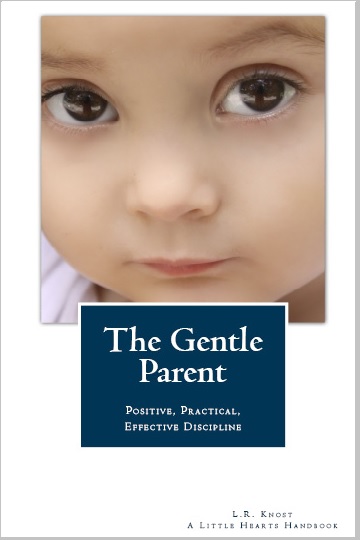 I’m so excited to share the release of The Gentle Parent: Positive, Practical, Effective Discipline, the third book in the Little Hearts Handbook series! The first reviews are in, and The Gentle Parent has already received 5-Star ratings and been called “food for a gentle parent’s soul” and “reassuring, relevant, and relatable for parents with children of all ages.” The Parenting Review shared this about The Gentle Parent:
I’m so excited to share the release of The Gentle Parent: Positive, Practical, Effective Discipline, the third book in the Little Hearts Handbook series! The first reviews are in, and The Gentle Parent has already received 5-Star ratings and been called “food for a gentle parent’s soul” and “reassuring, relevant, and relatable for parents with children of all ages.” The Parenting Review shared this about The Gentle Parent:
“Relaxed, Reassuring, Practical ~ Written by L.R.Knost, best-selling, award-winning author of ‘Two Thousand Kisses a Day’ and ‘Whispers Through Time,’ ‘The Gentle Parent: Positive, Practical, Effective Discipline’ shares the simple secrets of a peaceful, happy home in the Three C’s of gentle discipline–Connection, Communication, and Cooperation. In her signature relaxed and poetic style, L.R.Knost gently guides parents through the steps of applying the Three C’s in real-life scenarios from tantrums to defiance to parenting a strong-willed child to healing a broken parent/child relationship. Practical and proven, this newest installment in the Little Hearts Handbook parenting series will be tucked into diaper bags, kept handy on nightstands, and shared with good friends for its research-backed, experience-based, and humor-rich insights, ideas, and inspiration.”
Here’s a peek at the book trailer:
Back cover copy
Written by best-selling parenting and children’s book author and mother of six, L.R.Knost, ‘The Gentle Parent: Positive, Practical, Effective Discipline’ provides parents with the tools they need to implement the Three C’s of gentle discipline–Connection, Communication, and Cooperation–to create a peaceful home and a healthy parent/child relationship. Presented in bite-sized chapters perfect for busy parents and written in L.R.Knost’s signature conversational style, ‘The Gentle Parent’ is packed with practical suggestions and real-life examples to help parents through the normal ups and downs of gentle discipline on the road to raising a generation of world changers.
Table of Contents
~Introduction
Chapter 1 The Problem with Punishment offers insight on the punishment versus discipline debate.
~A Gentle Beginning
Chapter 2 Foundations: Setting the Stage for Discipline shares how our parenting choices in the first days and weeks and months of our children’s lives affect discipline in later stages.
Chapter 3 Castles in the Air: Building on Trust shows how laying a foundation of trust and building on it day by day, night by night, gentle response by gentle response creates the parent/child relationship essential to gentle discipline.
Chapter 4 Safe Surroundings shares simple ways to use baby proofing as visual boundaries to begin gentle limit-setting.
Chapter 5 Reasonable Expectations offers insight into normal child development and how our expectations affect our parenting.
Chapter 6 The Three C’s of Gentle Discipline presents the basic tools of gentle discipline and their components.
~Toddler Time
Chapter 7 Sandbox Soapbox: Toddler Insights shares parenting insights from a toddler’s perspective.
Chapter 8 Toddlers, Tantrums, and Time-In’s, Oh my! gives specific interventions and preventions for coping with and preventing tantrums.
Chapter 9 When Things Get Physical: Hitting, Kicking, Throwing, and Biting offers tools for working through the physical stage with toddlers and preschoolers.
Chapter 10 Testing the Boundaries shares insights and parenting techniques for guiding children through testing behaviors.
Chapter 11 Parenting in Public provides specific parenting tools for coping with behaviors in public places such as parks, shops, and restaurants.
Chapter 12 Crying Wolf: Don’t Be an Old Yeller! gives insight into the consequences of yelling at children.
Chapter 13 Toxic Parenting: Spanking, Shaming, Threatening, Manipulating contrasts peaceful, connected parenting with punitive, controlling parenting and their outcomes.
Chapter 14 All the ‘Right’ Parenting Moves gives insight into the basic truth that we are imperfect humans raising imperfect humans in an imperfect world and therefore no parenting will produce perfection.
~A Preschooler with a Plan
Chapter 15 Hurting Parents, Hurting Children shares ways parents can heal from their emotional baggage instead of passing that baggage along to the next generation.
Chapter 16 The Gift of a Strong-Willed Child offers parents with the tools to help children gifted with a rich and vibrant spirit blossom while still providing them with guidance and limits.
Chapter 17 You’re Not the Boss of Me redefines defiance to give parents a new perspective and offers insights to help parents work through the more challenging behaviors of childhood.
Chapter 18 A Place for Me shares the value of children having a small space of their own to escape from the stresses and sensory overload that can often spark behavioral issues.
Chapter 19 When Children Act Out: Reflecting Our Emotions provides insight into the often unexpected outbursts that signal a child’s need for help in coping with family issues.
Chapter 20 For Everything There is a Season encourages parents to slow down and recognize the basic truth that children are not small adults and to appreciate the beauty of childhood through the eyes of their children.
~Middle Childhood: Becoming Their Own Person
Chapter 21 Thoughtful Cooperation vs. Thoughtless Compliance offers tools for equipping children with inner guidance systems rather than external controls.
Chapter 22 The Butterfly Effect shares intentional shifts we can make in our parenting choices to change the trajectory of our children’s future.
Chapter 23 The Color of Change provides step-by-step changes parents can make to move from a punitive, control-based parenting style to connected, communication-based parenting.
Chapter 24 Bridge Over Troubled Waters: Parenting a ‘Problem’ Child offers insight into the world of the sensitive child and offers parents the tools to guide and support their sensory-gifted children gently and successfully.
Chapter 25 Raising Problem Solvers shares strategies to help parents provide their children with effective problem-solving tools to take into the future.
~Gentle Parenting: Teens and Beyond
Chapter 26 Children of Violence gives a glimpse into a real-world scenario that children experience every day and offers insight into the root of violence and bullying in our society.
Chapter 27 The Discipline of Choice examines the life lessons learned through a teen’s their own choices and the value of unconditional support from a connected parent.
Chapter 28 Helping Hurting Teens compares and contrasts the results of punitive, control-based parenting on adolescents and offers parents alternatives to punishments.
Chapter 29 Twelve Life Lessons for Daughters and Chapter 30 Twelve Life Lessons for Sons reach out and touch parents’ hearts to reawaken their memories of their own adolescent struggles and esteem issues to help them connect with where their teens are so that they can more empathetically and effectively guide them through the often turbulent adolescent years.
Appendix A
Five Gentle Tools for Handling Lying shares a practical and gentle approach to lying.
Appendix B
Backtalk is Communication – LISTEN tackles the startling truth that when children talk back they are actually communicating.
Appendix C
Twelve Steps to Gentle Parenting: Setting Yourself Up for Success offers a twelve month, step-by-step approach to work toward a more gentle style of parenting.
Sample Chapters
The Gift of a Strong-Willed Child
Bridge Over Troubled Waters~Parenting a ‘Problem’ Child
Book Reviews and Author Interviews
I’m so honored to have these wonderful people and organizations participating in the book tour for The Gentle Parent: Positive, Practical, Effective Discipline. (Links will be added as the tour stops go live!)
The Natural Parent Magazine – Australia
Dr. Laura Markham – Clinical Child Psychologist
Green Child Magazine Holiday Gift Guide
Kidlutions: Solutions for Kids
Synergy: Gentle Parenting Resources ~ South Africa
Susan Heim, author/editor ‘Chicken Soup for the Soul’
Family Review Center
The San Francisco Review
The Peaceful Housewife
Littles Rule the Roost
The Mahogany Way
You can check out more reviews here: The Gentle Parent: Positive, Practical, Effective Discipline
*Note: For those outside the US who would like to purchase books by L.R.Knost without Amazon’s high international shipping costs, a limited supply is available directly from the author here.
Also, *FREE!* to download on Kindle (can be downloaded to your computer, iPhone, or iPad) all day on November 1st and 10th ~ Gentle Parenting Workshop 1: Getting Started on Your Gentle Journey
 Award-winnning author, L.R.Knost, is the founder and director of the children's rights advocacy and family consulting group, Little Hearts/Gentle Parenting Resources, and Editor-in-Chief of Holistic Parenting Magazine. Books by L.R.Knost include Whispers Through Time: Communication Through the Ages and Stages of Childhood ; Two Thousand Kisses a Day: Gentle Parenting Through the Ages and Stages ; The Gentle Parent: Positive, Practical, Effective Discipline ; and Jesus, the Gentle Parent: Gentle Christian Parenting the first four books in the Little Hearts Handbook gentle parenting series, and children’s picture books Petey’s Listening Ears and the soon-to-be-released Grumpykins series.
Award-winnning author, L.R.Knost, is the founder and director of the children's rights advocacy and family consulting group, Little Hearts/Gentle Parenting Resources, and Editor-in-Chief of Holistic Parenting Magazine. Books by L.R.Knost include Whispers Through Time: Communication Through the Ages and Stages of Childhood ; Two Thousand Kisses a Day: Gentle Parenting Through the Ages and Stages ; The Gentle Parent: Positive, Practical, Effective Discipline ; and Jesus, the Gentle Parent: Gentle Christian Parenting the first four books in the Little Hearts Handbook gentle parenting series, and children’s picture books Petey’s Listening Ears and the soon-to-be-released Grumpykins series.
Bridge Over Troubled Waters~Parenting a ‘Problem’ Child
[Portions reprinted from The Gentle Parent: Positive, Practical, Effective Discipline by L.R.Knost. Two Thousand Kisses a Day: Gentle Parenting Through the Ages and Stages and Whispers Through Time: Communication Through the Ages and Stages of Childhood also available on Amazon and through other major retailers.]

We all have times when we struggle, when life gets hard, when stresses overtake us and the constant demands to grow and change and learn inherent in simply being human just feel like too much to bear.
Children are no different than adults in that they, too, can often feel overwhelmed by life. The sheer volume of growth and change and learning integral to childhood inevitably produce stress, though that isn’t necessarily a negative for all children. Some children, just like some adults, seem to have an innate ability to cope with stress, to adapt to change, and to face and conquer challenges. Some personalities even thrive on it!
But then there are those children who simply seem to struggle with life. Growth spurts cause incredible stress and discomfort. Change produces intense anxiety and resistance. And learning, being introduced to new thoughts and ideas, being stretched and challenged, inspires unease and distress.
These children are often labeled problem children, strong-willed, difficult, entitled, or brats. The reality, though, is that these are often the most sensitive children, small people who were created to be intimately in-tune with their bodies, their environment, and their fellow human beings. They feel, deeply and empathetically, other people’s pain and distress. They endure shifts in their surroundings like frontal assaults to their safety and security. They experience touch and movement of their bodies, and growth within their bodies, with painful intensity.
All too often, these sensationally gifted children are misunderstood. Their strong reactions to stimuli are misinterpreted as willfulness and stubbornness. They are punished instead of helped, controlled instead of supported, hurt instead of heard. Their uniqueness, gifts, and insights are forced underground where they often simmer in silence, bursting forth in flashes of rage or turning inward in brooding depression.
These children don’t need labels. They don’t need to be contained or controlled. They need what all children need…love, understanding, and guidance to grow into the gifted, unique individuals they were created to be.
Helping and supporting your sensitive child who is struggling is like building a bridge over troubled waters using the Three C’s of gentle discipline:
Connect:
- Observe and really get to know, understand, and appreciate the gifts and needs of the unique little person you are privileged to parent.
- Build a foundation of trust and respect in your parent/child relationship by ‘listening’ to the needs being expressed by your child’s behavior even when their behavior seems completely out of proportion to the situation.
Communicate:
- Keep an open door policy, particularly in the late evening hours when the house is quiet and everyone else is settled for the night. Sensitive children often need stillness to feel safe enough to begin processing all of the overwhelming stimuli and emotions they experience throughout the day.
- Help them to verbalize their feelings and experiences by listening to their hearts and not just their words, and quietly offering observations to help them to put things into perspective.
Cooperate:
- Work with your sensitive child to help them find coping mechanisms that will help them deal with overwhelming sensations, emotions, and situations. Some ideas are to offer them options such as…
- wearing noise-cancelling headphones to block out extraneous noises
- escaping to a Cozy Cave to take a break from the stresses of daily life
- creating a private code word that they can use to let you know they are feeling overwhelmed or that you can use to alert them that they may need to take a break or to dial things down a notch or two
- Equip them with tools to express themselves in acceptable ways (i.e. “It’s not okay to be rude, but it is okay to tell someone you need a break” or “It’s not okay to run away at school, but it is okay to go to your teacher and tell them you’re having a hard time.”)
- Work with them intentionally on a daily basis to overcome the stresses and minimize the impacts of what is, to us, normal daily life, but to them can be deeply troubling experiences.
Building a strong, supportive bridge into the future with your sensitive child will provide them with the coping skills they’ll need as adults to overcome normal stresses and challenges as well as those that come when life inevitably flows into troubled and turbulent waters.
For more tips for parenting your sensitive child and helping them learn coping mechanisms to deal with stresses, see The Gentle Parent: Positive, Practical, Effective Discipline.
Related posts:
Backtalk is Communication…LISTEN
The Gift of a Strong-Willed Child
When Children Act Out ~ Reflecting Our Emotions
The Incredible Power of the Whisper
The Taming of the Tantrum: A Toddler’s Perspective
The Thoughtful Parent’s Guide to Positive Parenting Guides
Simon and Garfunkel – Bridge Over Troubled Water Studio Version
When you’re weary, feeling small
When tears are in your eyes
I will dry them allI’m on your side
When times get rough
And friends just can’t be foundLike a bridge over troubled water
I will lay me down
Like a bridge over troubled water
I will lay me downWhen you’re down and out
When you’re on the street
When evening falls so hard,
I will comfort youI’ll take your part
When darkness comes
And pain is all aroundLike a bridge over troubled water
I will lay me down
Like a bridge over troubled water
I will lay me downOh, if you need a friend
I’m sailing right behindLike a bridge over troubled water
I will ease your mind
Like a bridge over troubled water
I will ease your mind…
 Award-winnning author, L.R.Knost, is the founder and director of the children's rights advocacy and family consulting group, Little Hearts/Gentle Parenting Resources, and Editor-in-Chief of Holistic Parenting Magazine. Books by L.R.Knost include Whispers Through Time: Communication Through the Ages and Stages of Childhood ; Two Thousand Kisses a Day: Gentle Parenting Through the Ages and Stages ; The Gentle Parent: Positive, Practical, Effective Discipline ; and Jesus, the Gentle Parent: Gentle Christian Parenting the first four books in the Little Hearts Handbook gentle parenting series, and children’s picture books Petey’s Listening Ears and the soon-to-be-released Grumpykins series.
Award-winnning author, L.R.Knost, is the founder and director of the children's rights advocacy and family consulting group, Little Hearts/Gentle Parenting Resources, and Editor-in-Chief of Holistic Parenting Magazine. Books by L.R.Knost include Whispers Through Time: Communication Through the Ages and Stages of Childhood ; Two Thousand Kisses a Day: Gentle Parenting Through the Ages and Stages ; The Gentle Parent: Positive, Practical, Effective Discipline ; and Jesus, the Gentle Parent: Gentle Christian Parenting the first four books in the Little Hearts Handbook gentle parenting series, and children’s picture books Petey’s Listening Ears and the soon-to-be-released Grumpykins series.
When Children Hit~10 Tips for Parents
[Portions reprinted from The Gentle Parent: Positive, Practical, Effective Discipline by L.R.Knost. Two Thousand Kisses a Day: Gentle Parenting Through the Ages and Stages and Whispers Through Time: Communication Through the Ages and Stages of Childhood also available on Amazon and through other major retailers.]
 Toddlers and preschoolers are still in the early stages of learning to communicate verbally. Add to that the fact that they have little-to-no impulse control and very immature social skills, and you’ve got a recipe for an instinctive physical response (i.e. hitting, kicking, biting, hair pulling, throwing things, etc.) to situations in which they are frustrated, angry, scared, or just tired and out-of-sorts.
Toddlers and preschoolers are still in the early stages of learning to communicate verbally. Add to that the fact that they have little-to-no impulse control and very immature social skills, and you’ve got a recipe for an instinctive physical response (i.e. hitting, kicking, biting, hair pulling, throwing things, etc.) to situations in which they are frustrated, angry, scared, or just tired and out-of-sorts.
Many parents who practice gentle discipline wonder where their little one picked up the behavior, not realizing that it is a normal and age-appropriate reaction, albeit an unacceptable one. Very often parents are advised to spank their child to train them not to hit others, especially those who are smaller and weaker than they are. (more…)
 Award-winnning author, L.R.Knost, is the founder and director of the children's rights advocacy and family consulting group, Little Hearts/Gentle Parenting Resources, and Editor-in-Chief of Holistic Parenting Magazine. Books by L.R.Knost include Whispers Through Time: Communication Through the Ages and Stages of Childhood ; Two Thousand Kisses a Day: Gentle Parenting Through the Ages and Stages ; The Gentle Parent: Positive, Practical, Effective Discipline ; and Jesus, the Gentle Parent: Gentle Christian Parenting the first four books in the Little Hearts Handbook gentle parenting series, and children’s picture books Petey’s Listening Ears and the soon-to-be-released Grumpykins series.
Award-winnning author, L.R.Knost, is the founder and director of the children's rights advocacy and family consulting group, Little Hearts/Gentle Parenting Resources, and Editor-in-Chief of Holistic Parenting Magazine. Books by L.R.Knost include Whispers Through Time: Communication Through the Ages and Stages of Childhood ; Two Thousand Kisses a Day: Gentle Parenting Through the Ages and Stages ; The Gentle Parent: Positive, Practical, Effective Discipline ; and Jesus, the Gentle Parent: Gentle Christian Parenting the first four books in the Little Hearts Handbook gentle parenting series, and children’s picture books Petey’s Listening Ears and the soon-to-be-released Grumpykins series.

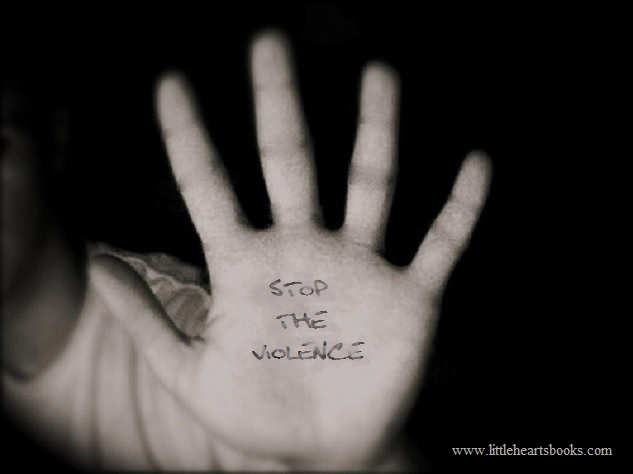
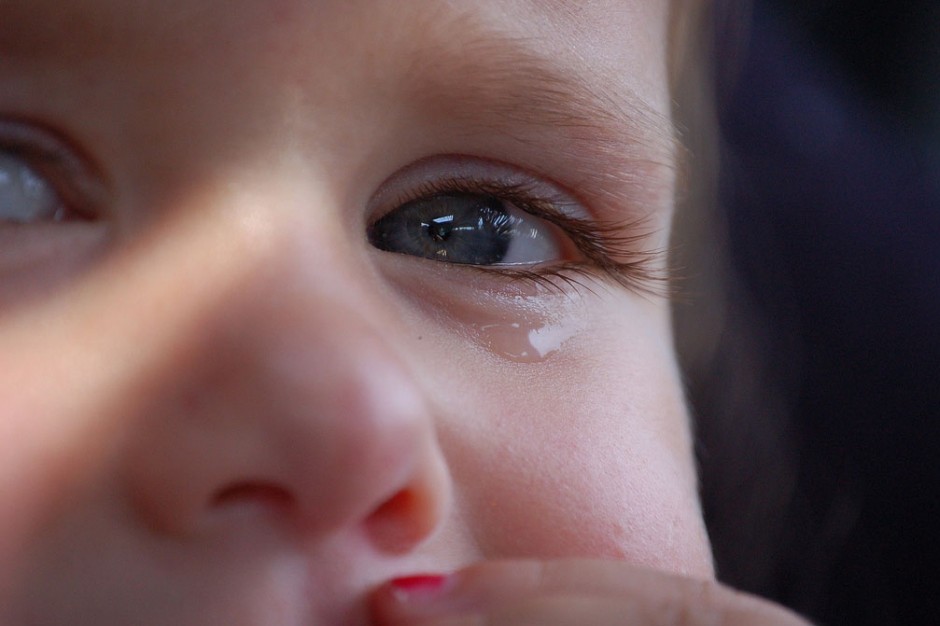 that must be purged? At what point did “defeating” a child so that they are “totally broken” become the goal of Christian parenting?
that must be purged? At what point did “defeating” a child so that they are “totally broken” become the goal of Christian parenting?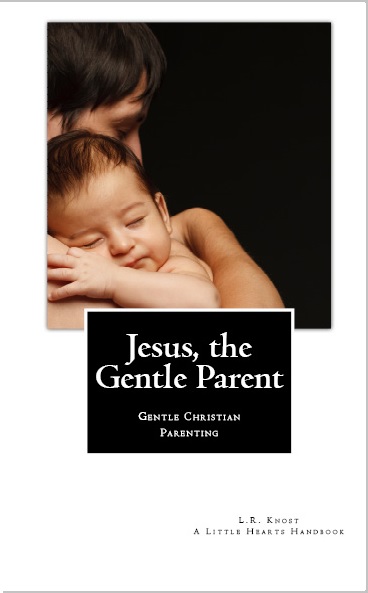
 legends, clichés and adages, and weaving them into unique or humorous settings.
legends, clichés and adages, and weaving them into unique or humorous settings.